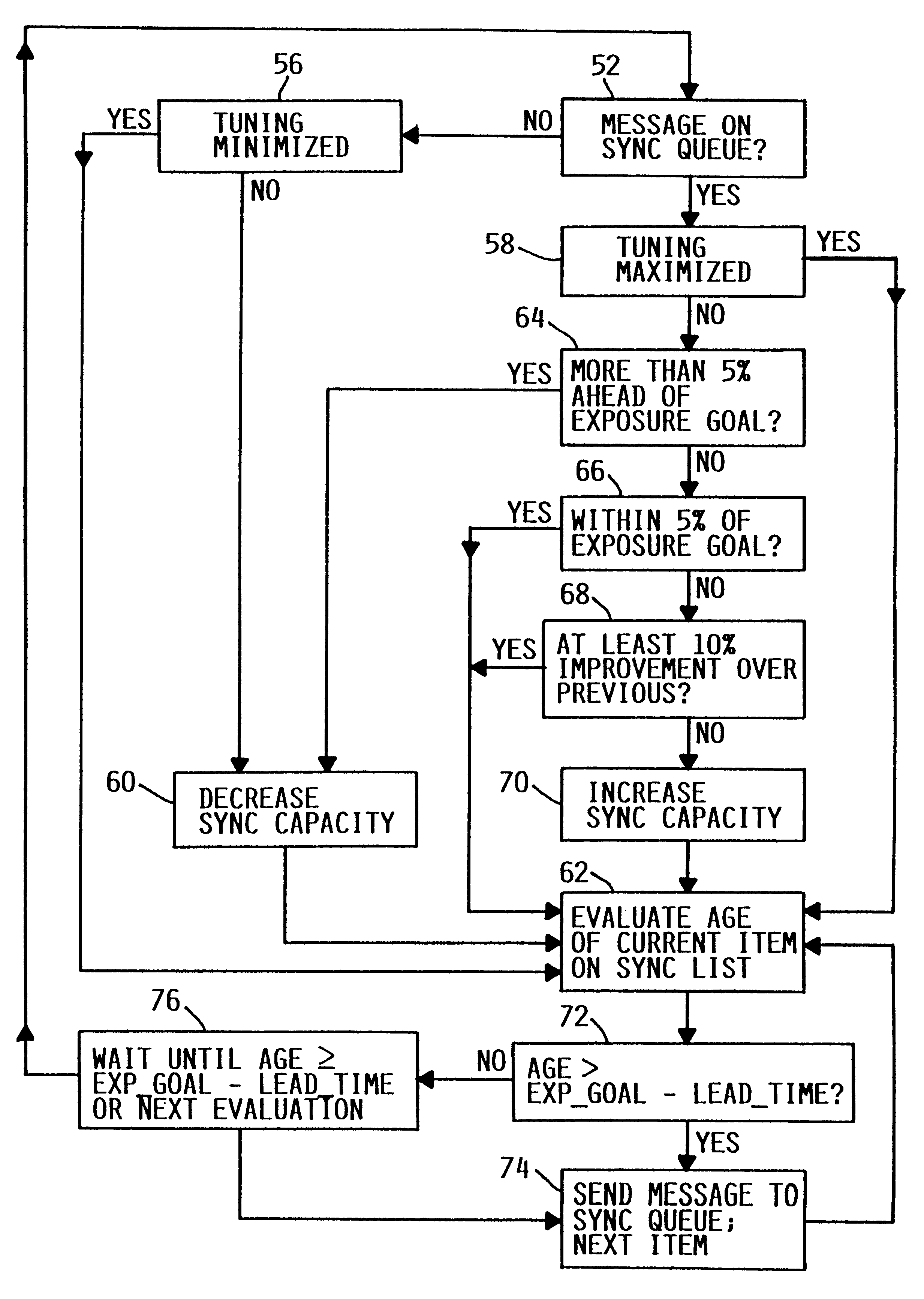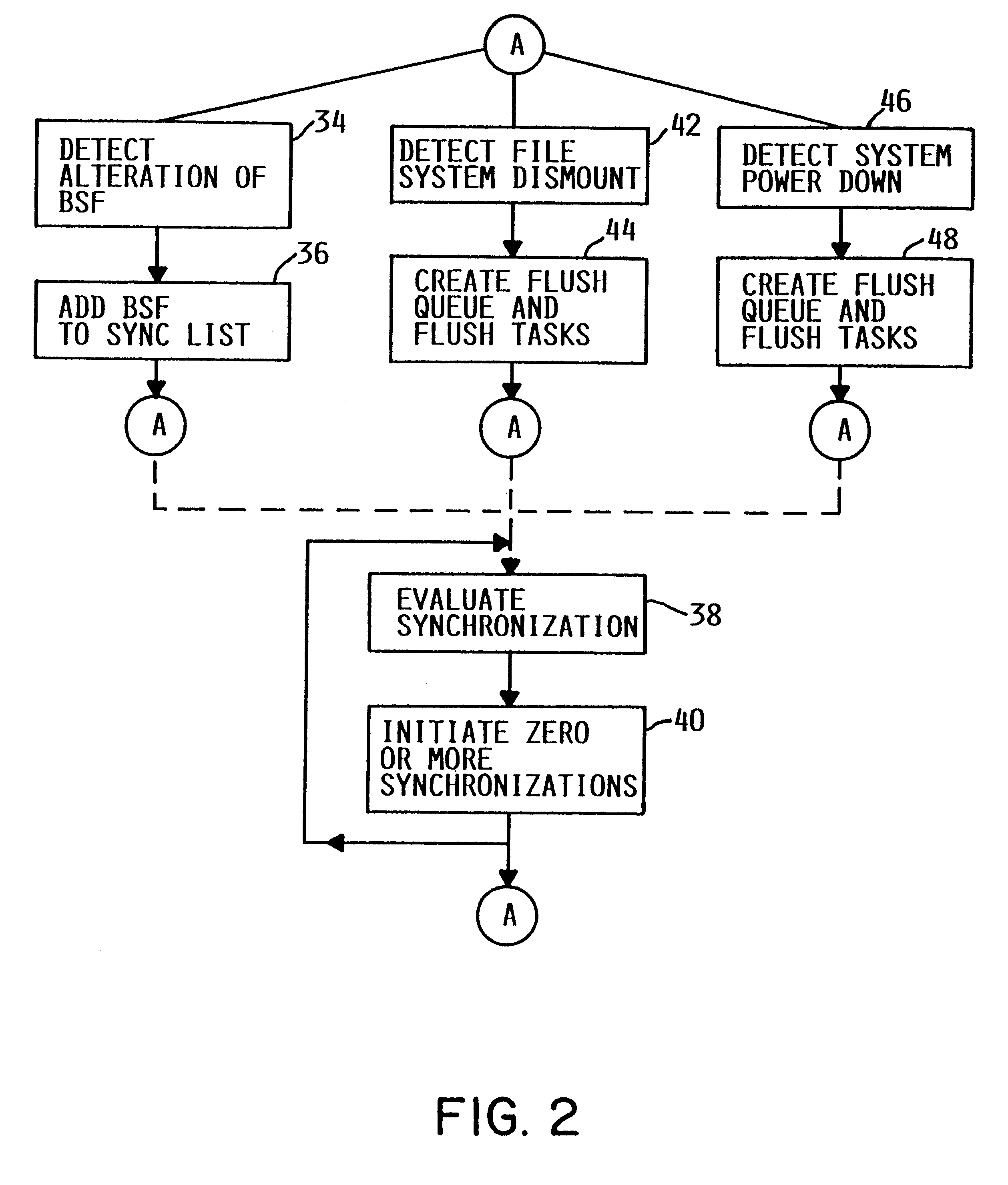Adaptive, time-based synchronization mechanism for an integrated posix file system
a file system and integrated technology, applied in the field of computer operating system file handling mechanisms, can solve the problems of affecting the response time of applications using the system, i/o bottlenecks, and significant strain on available system resources
- Summary
- Abstract
- Description
- Claims
- Application Information
AI Technical Summary
Problems solved by technology
Method used
Image
Examples
Embodiment Construction
As illustrated in FIG. 1, a computer system includes a main memory 10, a direct-access storage device (DASD) 12, input / output logic 14, network interface logic 16, and central processing unit (CPU) logic 18. These elements are connected to one another via one or more busses in the conventional manner. The logic of these elements may be implemented in hardware, software or a combination of both, e.g., firmware, as well-known in the art. The computer system includes other elements, both hardware and software, but only these elements are illustrated for purposes of clarity in describing the present invention. The computer system is preferably an IBM AS / 400 server. Nevertheless, the present invention is applicable to any suitable computer system. Similarly, although the file system of the computer to which the present invention relates is preferably an integrated POSIX file system, the present invention may be used in conjunction with any suitable file system.
In accordance with the clie...
PUM
 Login to View More
Login to View More Abstract
Description
Claims
Application Information
 Login to View More
Login to View More - R&D
- Intellectual Property
- Life Sciences
- Materials
- Tech Scout
- Unparalleled Data Quality
- Higher Quality Content
- 60% Fewer Hallucinations
Browse by: Latest US Patents, China's latest patents, Technical Efficacy Thesaurus, Application Domain, Technology Topic, Popular Technical Reports.
© 2025 PatSnap. All rights reserved.Legal|Privacy policy|Modern Slavery Act Transparency Statement|Sitemap|About US| Contact US: help@patsnap.com



